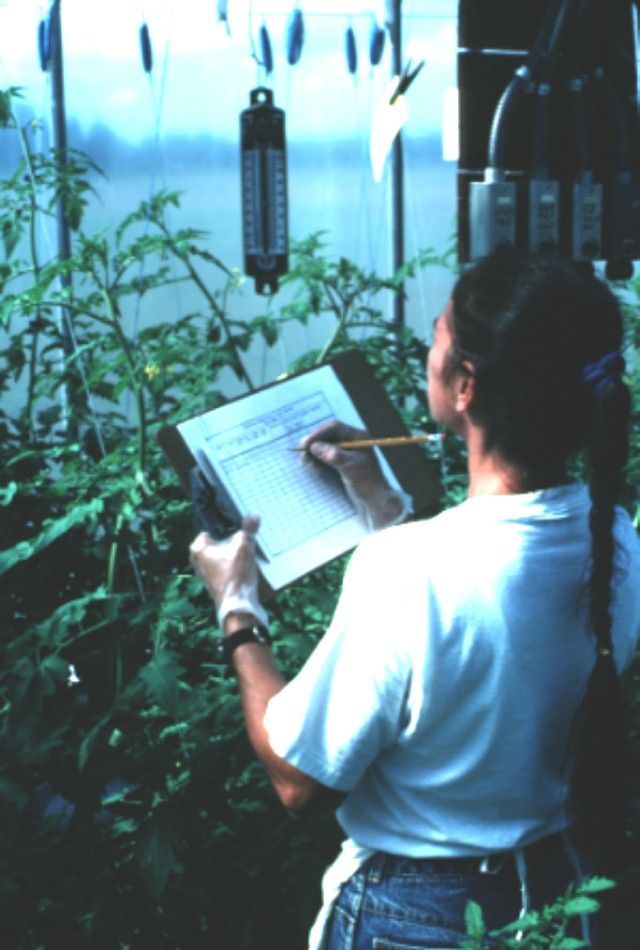One of the most important points a new grower needs to know is that greenhouse vegetable production is very costly. It is costly to establish the greenhouse facility, and additional costs are incurred during the crop production, harvesting, and shipping phases. All of these costs are incurred before any financial return is realized.
The cost of establishing the operation will depend on many factors. These factors include the size and number of the greenhouses, type of production system to be used, method of marketing, need for associated facilities such as packing facilities and vehicles, availability of supplies and support services, and amount and quality of labor.
A typical 4000 square-foot greenhouse will cost between $30,000 and $50,000 to establish and equip. Costs will vary depending on source of materials, on whether or not a concrete floor will be installed, on cost of the specific production system used, and on whether the owner or a private contractor will do the construction. Erecting numerous stand-alone houses is not as cost-effective as erecting two or three gutter-connected houses, but for most, the single, stand-alone house may be the only way to get started.
The prospective grower must determine a source of capital and whether or not the payments are affordable if the operation is financed. Remember, a greenhouse operation will require a considerable initial investment.
Production systems differ in cost. Hydroponic or nutrient film technique (NFT) systems are costly to install, but the system is reusable for many seasons. Other soilless production systems are slightly less complex to install but the grower must renew supplies every one to two crops. These soilless systems include perlite, rockwool, bag culture, peat trough culture, etc. The least expensive cultural system involves growing plants directly in the greenhouse floor soil. Usually this is the native soil of the greenhouse location. This system is least likely to succeed in Florida because of the buildup of disease organisms and nematodes in the soil. Growing in the native soil in Florida would most likely be very challenging, if not impossible.
Production costs (supplies, fuel, overhead, packing, shipping, labor) will amount to about $5,000 to $10,000 for each 4000 square-foot house for a crop such as tomato or cucumber. Major supplies required for production will include fertilizer, heating fuel, pH and conductivity meters, seeds, starting blocks for seedlings, pesticides, sprayer, trellis string and plant clips, harvesting containers, packing boxes, and wrapping materials.

Overhead costs include electricity for lights, pumps, heaters, and fans. Other overhead expenses will be incurred for insurance, taxes, and other similar expenses. Cooling the greenhouse is a major cost factor in Florida because some ventilating and cooling will be needed nearly every day of the production season, even in the winter.
Labor requirements depend on the size of the operation and whether or not family members will be able to maintain the house(s). If outside labor is needed, it is crucial that the labor be well trained and very dependable. A typical 4000 square-foot house will require approximately 25 hours of labor per week just to maintain the crop. This maintenance includes fertilizing, irrigation system monitoring, pollinating the crop, pruning and tying the plants, spraying for disease and insect control, sanitation, and general greenhouse structure and systems management. A grower should not expect to pay only minimum hourly wages to hire a person with the qualifications for this type of work. Worker dependability cannot be overemphasized.
Although costs of establishing the operation are extremely high, the return from the crop can be good. Profitability depends on how successfully the individual manages the operation and markets the crop. For example, tomato crops should yield between 25 and 30 pounds of US No.1 fruit per plant. At a price of $1.00 per pound, this type of operation could gross between $25,000 and $30,000 per house (1200 plants). Yields and returns on this order of magnitude have only been achieved by the most experienced growers in Florida. Currently, yields are more on the order of 15 pounds per plant for most growers. Therefore, the potential grower must be realistic in setting income goals for a greenhouse operation. It is especially critical if the operation is to be financed by a lending institution.
More Information
For more information on greenhouse crop production, please visit our website at http://smallfarms.ifas.ufl.edu [January 2012].
For the other chapters in the Greenhouse Vegetable Production Handbook, see the documents listed below:
Volume 1: Introduction • Financial Considerations • Pre-Construction Considerations • Crop Production • Considerations for Managing Greenhouse Pests • Summary
Volume 2: Physical Greenhouse Design Considerations • Production Systems • Other Design Information Resources
Volume 3: Preface • General Aspects of Plant Growth • Production Systems • Irrigation of Greenhouse Vegetables • Fertilizer Management for Greenhouse Vegetables • Production of Greenhouse Tomatoes • Greenhouse Cucumber Production • Greenhouse Nematode Management • Alternative Greenhouse Crops • Vegetable Insect Identification and Management